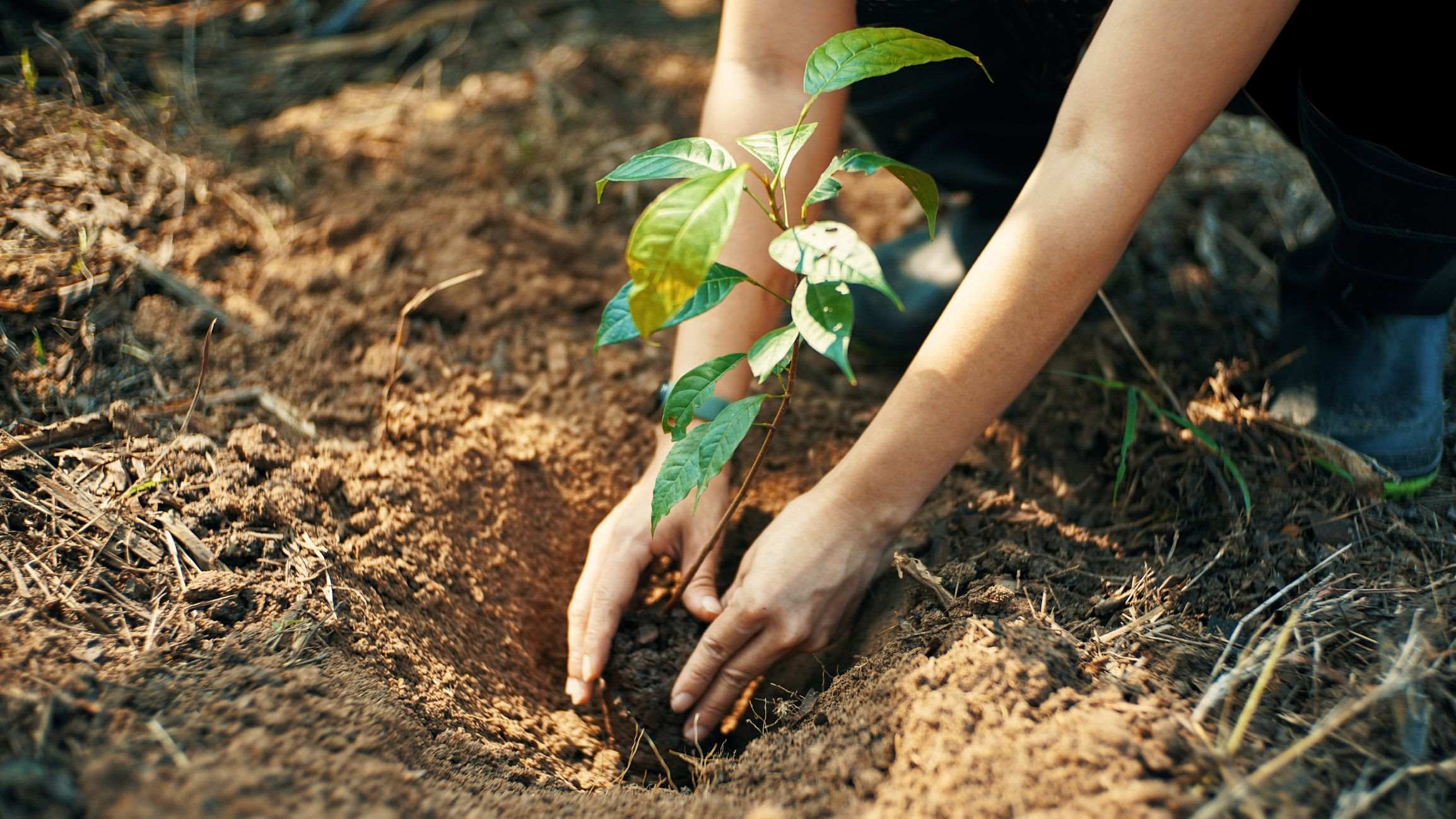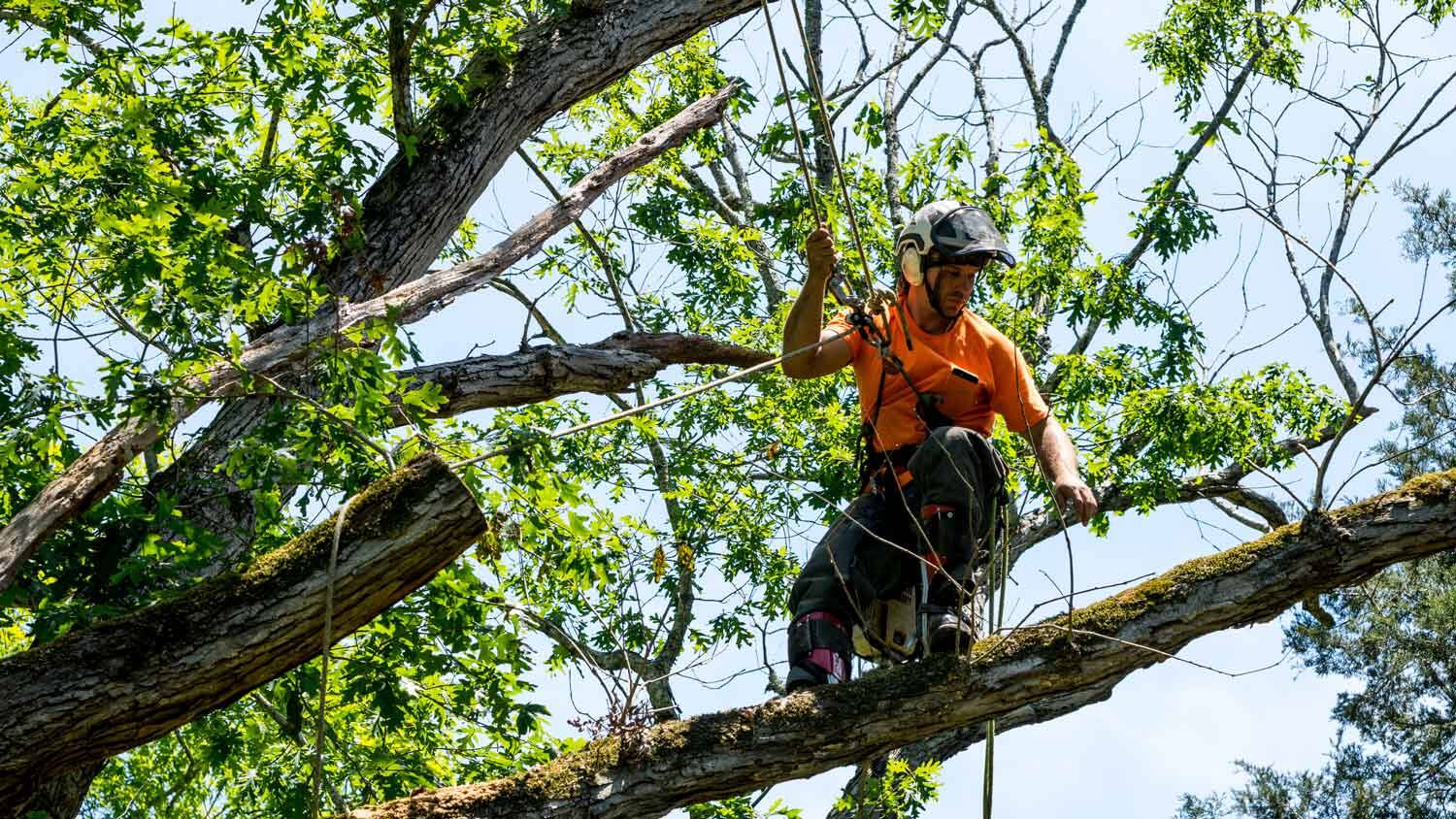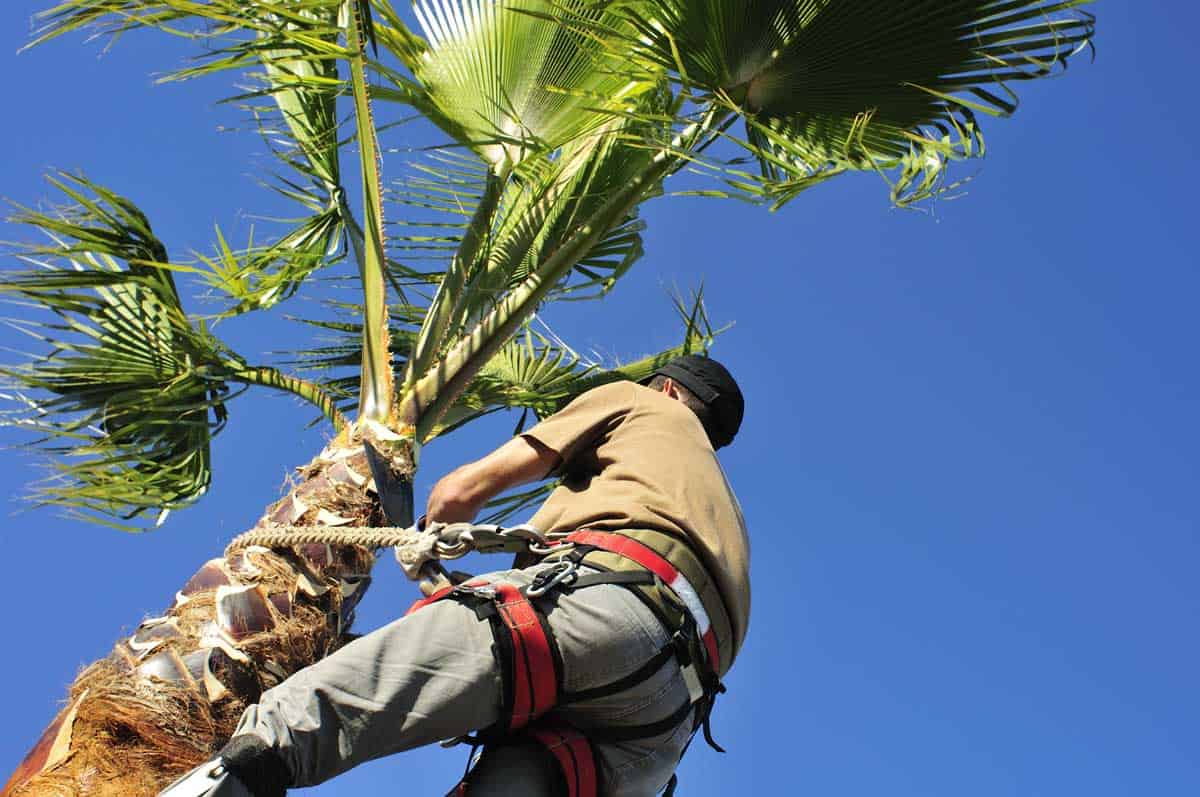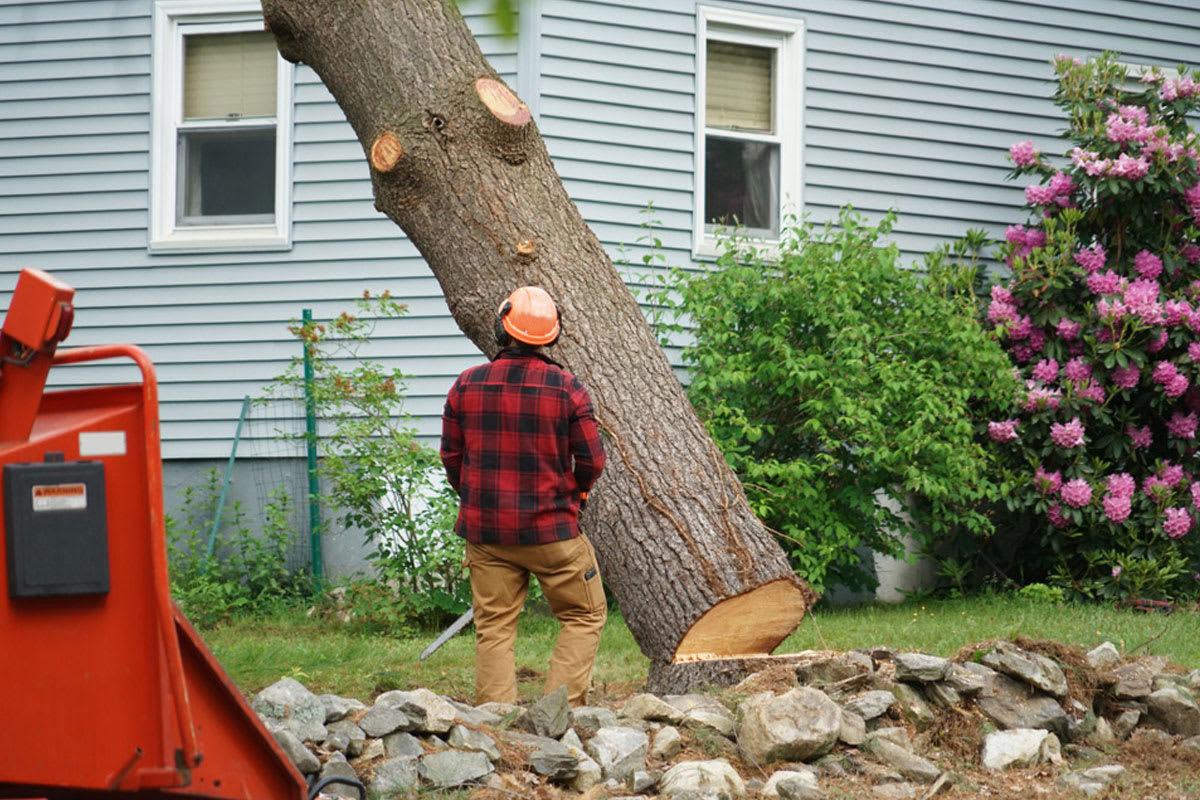Home>Gardening Tips and Tricks>Eco-Friendly Gardening>How Much Does Planting A Tree Offset Your Carbon Footprint
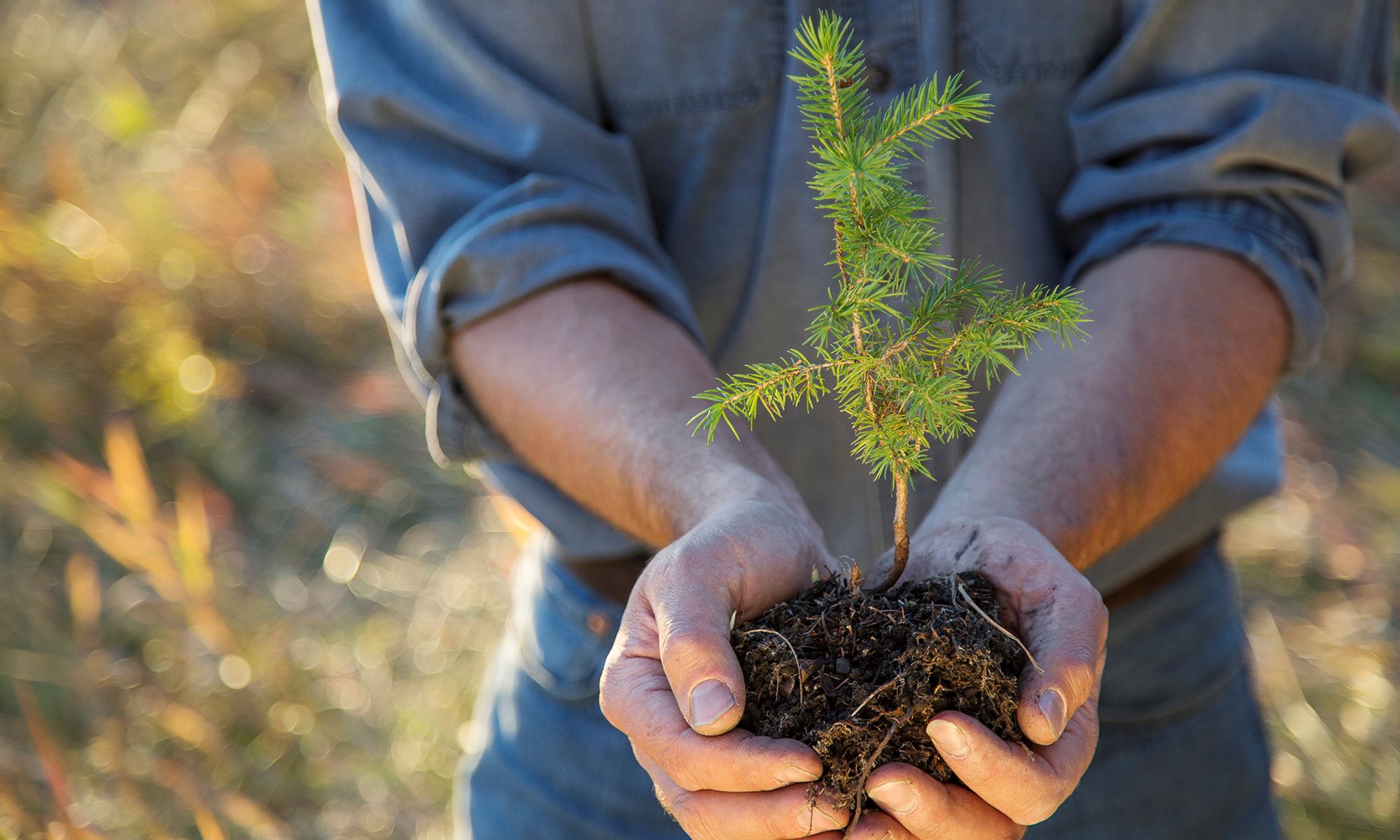

Eco-Friendly Gardening
How Much Does Planting A Tree Offset Your Carbon Footprint
Modified: January 22, 2024
Discover how planting a tree can significantly reduce your carbon footprint with eco-friendly gardening techniques. Take a step towards a greener future today!
(Many of the links in this article redirect to a specific reviewed product. Your purchase of these products through affiliate links helps to generate commission for Chicagolandgardening.com, at no extra cost. Learn more)
Table of Contents
- Introduction
- What is carbon offsetting?
- The importance of planting trees
- How does planting a tree offset your carbon footprint?
- Factors that affect the carbon offsetting potential of a tree
- Calculating the carbon offset of planting a tree
- Case studies: Real-life examples of carbon offsetting through tree planting
- Other environmental benefits of planting trees
- Challenges and limitations of tree-based carbon offsetting
- Conclusion
Introduction
Welcome to the world of eco-friendly gardening! In this article, we will explore the fascinating concept of carbon offsetting through tree planting and how it can help reduce our carbon footprint. As the effects of climate change become increasingly apparent, it is crucial for us to take proactive steps towards sustainable living. One effective way of achieving this is by embracing eco-friendly gardening practices and understanding the role trees play in mitigating climate change.
Carbon offsetting refers to the act of compensating for our carbon emissions by investing in projects that reduce or remove greenhouse gases from the atmosphere. One such project involves planting trees, which are nature’s own carbon sinks. Trees absorb carbon dioxide through photosynthesis, converting it into oxygen and storing the carbon in their trunks, branches, and roots. By planting trees, we can effectively offset a significant portion of our carbon emissions.
Planting trees offers numerous benefits beyond carbon offsetting. Trees help combat air pollution by absorbing harmful pollutants and releasing clean oxygen into the atmosphere. They also play a crucial role in preserving biodiversity by providing habitats for a wide range of species. Additionally, trees help reduce soil erosion, improve water quality, and provide shade that can lower energy consumption in buildings.
Calculating the carbon offset of planting a tree involves considering various factors such as the type of tree, its age, and the location in which it is planted. These factors influence the amount of carbon dioxide a tree can sequester and, subsequently, the level of carbon offset it can provide. Understanding these calculations allows us to make informed decisions and maximize the environmental impact of our tree planting efforts.
In this article, we will explore the fascinating world of eco-friendly gardening and delve into the science behind carbon offsetting through tree planting. We will also explore real-life case studies of successful carbon offsetting projects and discuss the challenges and limitations associated with tree-based carbon offsetting. By the end of this article, you will have a comprehensive understanding of how planting trees can make a tangible difference in reducing our carbon footprint and creating a more sustainable future.
What is carbon offsetting?
Carbon offsetting is a process that aims to balance out the carbon dioxide emissions produced by individuals, businesses, or events by investing in projects that reduce or remove an equivalent amount of carbon dioxide from the atmosphere. It is a way to neutralize the carbon footprint and mitigate the negative impact of greenhouse gas emissions on the environment.
The concept of carbon offsetting is based on the understanding that carbon dioxide is a major contributor to climate change. When we burn fossil fuels or engage in activities that release carbon dioxide into the atmosphere, such as driving cars, using electricity, or manufacturing goods, we contribute to the ongoing increase in greenhouse gases. These gases trap heat within the Earth’s atmosphere, leading to rising global temperatures and a host of detrimental effects.
Carbon offsetting projects typically involve activities that either reduce emissions or absorb carbon dioxide from the atmosphere. These projects can include renewable energy initiatives, such as wind farms or solar power plants, which replace the use of fossil fuels with cleaner sources of energy. Other projects focus on sustainable agriculture practices or reforestation efforts, which involve planting trees to remove carbon dioxide through photosynthesis and store it in the tree’s biomass.
There are various certification programs and standards in place to ensure the integrity and effectiveness of carbon offsetting projects. These programs provide guidelines for calculating and verifying the carbon offset of specific activities and establishing a transparent and accountable process. The most widely recognized standard is the Verified Carbon Standard (VCS).
Many individuals, organizations, and businesses choose to voluntarily offset their carbon emissions as part of their sustainability and corporate social responsibility initiatives. By investing in carbon offset projects, they are actively taking responsibility for their impact on the environment and supporting activities that promote a shift towards a greener and more sustainable future.
Carbon offsetting is not a standalone solution to climate change, but it is a valuable contribution to the overall efforts to reduce greenhouse gas emissions and transition to a low-carbon economy. It allows individuals and businesses to take immediate action towards mitigating their carbon footprint while longer-term solutions are implemented.
The importance of planting trees
Planting trees is not only aesthetically pleasing but also plays a crucial role in mitigating climate change and promoting a sustainable environment. Trees are often referred to as the lungs of the Earth, as they absorb carbon dioxide and release oxygen through the process of photosynthesis. Here are some key reasons why planting trees is important:
- Carbon sequestration: Trees act as valuable carbon sinks, absorbing carbon dioxide and storing it in their trunks, branches, and roots. This helps reduce the concentration of greenhouse gases in the atmosphere, mitigating climate change and its associated impacts. In fact, a single mature tree can absorb up to 48 pounds of carbon dioxide per year.
- Air purification: Trees play a vital role in improving air quality by absorbing pollutants and releasing clean oxygen. They filter out harmful particles and gases, such as nitrogen oxides, sulfur dioxide, and ozone, thereby reducing the risk of respiratory illnesses and improving overall human health.
- Preservation of biodiversity: Trees provide habitats and food sources for a wide range of species, including birds, insects, and mammals. By planting trees, we help restore and preserve biodiversity, contributing to the functioning of ecosystems and the overall health of our planet.
- Water conservation: Trees play a significant role in regulating the water cycle. They help reduce soil erosion by holding rainwater, preventing runoff and the loss of valuable topsoil. Additionally, through a process called transpiration, trees release moisture into the air, leading to increased humidity and the formation of clouds, which ultimately results in rainfall.
- Temperature regulation: Trees provide shade, reducing the heat island effect in urban areas and lowering the need for air conditioning. They also release moisture into the air, which has a cooling effect. By strategically planting trees, we can create microclimates that help cool our surroundings and reduce energy consumption.
It is important to note that planting trees is not a one-size-fits-all solution. The right tree should be planted in the right place, considering factors such as climate, soil conditions, and intended purpose. Native tree species are often preferred, as they are adapted to the local environment and require less maintenance. By planting a diverse range of tree species, we can further enhance the resilience and ecological value of our landscapes.
Overall, trees are essential for maintaining a healthy ecosystem and addressing the challenges posed by climate change. By actively participating in tree planting initiatives, we can make a tangible difference in combating climate change, improving air quality, preserving biodiversity, and creating a more sustainable future for generations to come.
How does planting a tree offset your carbon footprint?
Planting a tree can offset your carbon footprint by capturing and storing carbon dioxide from the atmosphere. Trees are highly effective at absorbing carbon dioxide through photosynthesis, a process that utilizes sunlight to convert carbon dioxide into oxygen. The carbon is then stored within the tree’s biomass, including its trunk, branches, and leaves. Here is a breakdown of how tree planting offsets your carbon footprint:
1. Carbon Sequestration: Trees act as carbon sinks by absorbing carbon dioxide during photosynthesis. Through this process, trees capture carbon and convert it into biomass, effectively removing it from the atmosphere. Carbon sequestration helps offset the carbon emissions produced by various human activities, such as driving cars, using electricity, or manufacturing goods.
2. Long-Term Carbon Storage: Trees continue to store carbon throughout their lifetime. As trees grow, their biomass, including their trunks, branches, and roots, increases, resulting in more carbon being stored. This long-term carbon storage ensures that the carbon remains locked away, helping to mitigate climate change by preventing its release into the atmosphere.
3. Enhanced Forest Ecosystems: Planting trees also contributes to the growth of forests, which support diverse ecosystems. Forests provide habitats for various species, promote biodiversity, and help maintain the balance of ecosystems. By planting trees, we create and enhance these valuable forest ecosystems that provide additional benefits beyond carbon offsetting.
4. Secondary Carbon Benefits: Trees not only directly sequester carbon but also indirectly contribute to carbon offsetting through other means. For example, trees provide shade, reducing the need for energy-intensive cooling in buildings. Additionally, forests can act as windbreaks, reducing energy consumption by protecting crops and buildings from harsh winds. These secondary benefits further contribute to offsetting carbon emissions.
It is important to note that the carbon offset potential of a tree depends on various factors, including the species planted, the age of the tree, and its location. Different tree species have different growth rates and capacities for carbon sequestration. Older trees tend to sequester more carbon than younger ones, as they have more biomass. Trees planted in areas with rich soil and favorable growing conditions also have the potential to sequester more carbon.
Calculating the exact carbon offset of planting a tree is a complex process that involves considering these factors and using standardized methodologies. However, regardless of the specific numbers, it is clear that planting trees plays a vital role in offsetting carbon emissions and mitigating climate change. By actively participating in tree planting initiatives, we can make a positive impact on the environment while striving towards a more sustainable future.
Factors that affect the carbon offsetting potential of a tree
The carbon offsetting potential of a tree is influenced by various factors that affect its growth, biomass accumulation, and carbon sequestration capacity. Understanding these factors is crucial when considering tree planting initiatives for offsetting carbon emissions. Here are some key factors that influence a tree’s carbon offsetting potential:
1. Tree Species: Different tree species have varying growth rates and capacities for carbon sequestration. Some tree species, such as oak or Douglas fir, are known for their fast growth and high carbon storage capabilities. Choosing tree species that are well-suited to the local climate and soil conditions can optimize carbon uptake and storage.
2. Age and Size: Carbon offsetting potential increases as a tree grows older and larger. Younger trees have smaller biomass and, therefore, sequester less carbon compared to mature trees. The size of the tree at the time of planting also affects its initial carbon offsetting capacity, with larger trees typically sequestering more carbon initially.
3. Growing Conditions: The environment in which a tree is planted significantly affects its growth and carbon offsetting potential. Factors such as soil quality, water availability, sunlight exposure, and temperature influence a tree’s ability to photosynthesize, grow, and accumulate biomass. Trees planted in favorable conditions tend to sequester more carbon than those in less ideal environments.
4. Management: Proper tree care and management practices can enhance a tree’s carbon offsetting potential. Regular pruning, fertilization, and protection from pests and diseases help ensure the tree’s health and growth, promoting optimal carbon sequestration. Additionally, avoiding deforestation or excessive tree removal can maintain the carbon stored in existing forests.
5. Location: The geographic location of a tree planting initiative can impact its carbon offsetting potential. Different regions have varying climate conditions, which influence tree growth rates and carbon uptake. In general, trees in temperate and tropical regions tend to sequester more carbon compared to those in colder or drier climates.
6. Tree Density and Spacing: The density and spacing of trees in a planting area can affect the overall carbon offset. Planting trees in denser clusters allows for greater biomass accumulation and carbon sequestration per unit area. Proper spacing ensures access to sunlight, reduces competition between trees, and maximizes their potential for growth and carbon uptake.
It is important to consider these factors when planning tree planting initiatives for carbon offsetting. By selecting suitable tree species, ensuring proper care and management, and planting in favorable environments, we can optimize the carbon offset potential of trees. Moreover, ongoing monitoring and maintenance of planted trees are essential to ensure their longevity and continued carbon sequestration benefits.
Calculating the carbon offset of planting a tree
Calculating the carbon offset of planting a tree involves considering various factors that influence a tree’s ability to sequester carbon dioxide from the atmosphere. While the exact calculations can be complex, understanding the key elements involved allows us to estimate the carbon offset potential. Here are the factors to consider when calculating the carbon offset of planting a tree:
1. Tree Species: Different tree species have different capacities for carbon sequestration. Some trees, such as conifers or hardwoods, are known for their high carbon storage capabilities. Researching the specific carbon sequestration rates for the chosen tree species helps estimate the amount of carbon it can absorb and store over time.
2. Growth Rate: The growth rate of a tree influences its carbon offsetting potential. Faster-growing trees tend to accumulate biomass and sequester carbon more quickly than slower-growing trees. Considering the average growth rate of the chosen tree species provides an estimate of its yearly carbon uptake.
3. Tree Age: The age of a tree affects its carbon storage capacity. Younger trees have less biomass and, therefore, store less carbon compared to older, more mature trees. Taking into account the anticipated age of the tree at the end of its useful life provides an estimate of the total carbon sequestered over that period.
4. Biomass Calculation: The biomass of a tree, including its trunk, branches, leaves, and roots, represents the amount of carbon it has sequestered. Standardized formulas can help estimate the biomass based on the tree’s diameter, height, and species. These calculations provide a rough approximation of the carbon stored within the tree’s biomass.
5. Carbon Conversion Factors: To convert the tree’s biomass into carbon dioxide equivalents, conversion factors are used. These factors represent the ratio of carbon stored within the biomass to the amount of carbon dioxide it would release if burned or decomposed. Carbon conversion factors vary depending on tree species and are essential for accurate carbon offset calculations.
6. Project Duration: Considering the duration of the carbon offset project is essential. Trees continue to sequester carbon as they grow, so a longer project duration means a greater overall carbon offset. Estimating the anticipated lifespan of the tree and the duration of the offset project helps determine the total carbon sequestration potential.
By combining these factors, it is possible to estimate the carbon offset provided by planting a single tree. However, it’s important to remember that carbon offset calculations are estimates and can vary depending on specific environmental conditions and management practices.
Various online carbon calculators are available to assist with estimating carbon offset potential based on tree planting. These calculators typically consider factors such as location, tree species, and project duration to provide a rough estimation of carbon sequestration. However, for more accurate calculations, consulting with forestry professionals or carbon offset experts is recommended.
Understanding the calculations behind carbon offsetting through tree planting allows us to make informed decisions and maximize the environmental impact of our efforts. By planting trees strategically and considering the factors mentioned above, we can contribute to reducing carbon dioxide levels in the atmosphere and combat climate change.
Case studies: Real-life examples of carbon offsetting through tree planting
Real-life examples of carbon offsetting through tree planting demonstrate the effectiveness of this method in mitigating our carbon footprint and combating climate change. These case studies highlight successful projects that showcase the significant impact of tree planting initiatives:
1. The Great Green Wall, Africa: The Great Green Wall project is an ambitious initiative aiming to combat desertification in Africa by planting a wall of trees spanning across 8,000 kilometers. This project involves planting drought-resistant species, creating a barrier against expanding deserts, and promoting biodiversity. It is estimated that once fully realized, the Great Green Wall will sequester approximately 250 million tons of carbon dioxide annually, contributing significantly to carbon offsetting efforts.
2. Eden Reforestation Projects, Madagascar: Eden Reforestation Projects is a non-profit organization actively involved in reforestation efforts worldwide. In Madagascar, they have been successful in restoring mangrove forests along the coast. Mangroves are highly effective carbon sinks and provide critical habitats for marine life. Through their tree planting initiatives, Eden Reforestation Projects has planted millions of trees, sequestering millions of tons of carbon and improving coastal ecosystems.
3. The Green Belt Movement, Kenya: The Green Belt Movement, founded by Nobel Peace Prize laureate Wangari Maathai, focuses on community-based reforestation efforts in Kenya. The project aims to combat deforestation, promote sustainable land use, and empower local communities. Through their tree planting initiatives, the Green Belt Movement has planted over 51 million trees, restoring degraded land, sequestering carbon, and improving livelihoods within local communities.
4. Piyush Goyal’s Solar Power Tree Initiative, India: Piyush Goyal, the former Minister of Power, initiated the Solar Power Tree project in India to promote renewable energy and tree planting simultaneously. The project involves planting solar power trees in public spaces, where photovoltaic panels are set up like the branches of a tree. These solar power trees generate clean energy while providing shade and promoting urban greening. This innovative project offsets carbon emissions and addresses energy needs sustainably.
5. One Tree Planted Campaign, Global: The One Tree Planted campaign is a global movement dedicated to reforestation efforts worldwide. Collaborating with various organizations, the campaign focuses on planting trees in areas affected by deforestation, wildfires, or natural disasters. Their projects span across countries such as the United States, Brazil, Australia, and more, planting millions of trees and restoring vital ecosystems.
These case studies demonstrate the incredible potential of tree planting initiatives in offsetting carbon emissions and promoting environmental sustainability. By actively participating in similar projects and supporting organizations dedicated to reforestation efforts, we can contribute to a greener and more sustainable future.
Other environmental benefits of planting trees
Planting trees not only helps offset carbon emissions but also provides a wide range of additional environmental benefits. Trees play a crucial role in maintaining ecological balance, improving air and water quality, conserving energy, and supporting biodiversity. Here are some key environmental benefits of planting trees:
- Air purification: Trees act as natural air filters, absorbing pollutants such as nitrogen oxides, sulfur dioxide, and ozone. They also capture airborne particles, including dust and pollen, improving the overall air quality. By planting trees in urban areas, we can reduce the concentration of harmful pollutants and create healthier living environments.
- Water conservation: Trees play a vital role in regulating the water cycle and conserving water resources. They help reduce soil erosion by holding the soil in place with their roots, preventing runoff and the loss of valuable topsoil. Trees also help promote groundwater recharge and maintain adequate water levels in rivers, streams, and lakes.
- Temperature regulation: Trees provide shade, reducing the heat island effect in urban areas. By strategically planting trees to provide shade for buildings and outdoor spaces, we can significantly lower ambient temperatures, improve comfort, and decrease the need for energy-intensive cooling. Trees also release moisture into the air through a process called transpiration, which has a cooling effect.
- Conservation of biodiversity: Trees provide habitats and food sources for a variety of animal species, contributing to the preservation of biodiversity. Forests support a complex web of life, from insects and birds to mammals and amphibians. By planting trees, we create valuable ecosystems that are vital for the survival of many species and help maintain the balance of nature.
- Soil improvement: Trees have a positive impact on soil health by enhancing its fertility, structure, and nutrient content. Through their fallen leaves and organic matter, trees contribute to the buildup of humus in the soil. This improves soil moisture retention, nutrient cycling, and overall soil quality, supporting the growth of other plant species.
- Noise reduction: Trees act as natural sound barriers, reducing noise pollution in urban and suburban areas. Their leaves, branches, and trunks absorb and deflect sound waves, creating a quieter and more peaceful environment. By planting trees along busy roads or near buildings, we can mitigate the negative impacts of noise pollution.
These environmental benefits highlight the significant role that trees play in creating a sustainable and healthy ecosystem. By planting trees, we can actively contribute to the preservation of the environment, improving air and water quality, conserving energy, and protecting biodiversity. It is essential to recognize and appreciate the wide-ranging positive impacts of trees beyond their carbon offsetting potential.
Challenges and limitations of tree-based carbon offsetting
While tree-based carbon offsetting is a valuable tool in mitigating carbon emissions and combating climate change, it also comes with its share of challenges and limitations. It is important to understand these limitations as we consider tree planting initiatives for carbon offsetting purposes. Here are some key challenges and limitations:
1. Timescale: Trees take time to grow and reach their full carbon sequestration potential. Young trees have limited biomass and, therefore, sequester less carbon compared to mature trees. This means that the full carbon offsetting benefits of tree planting may not be realized immediately and require long-term commitment and patience.
2. Land Availability: There may be limitations in accessing suitable land for tree planting initiatives. In urban areas, space constraints may make it challenging to find areas suitable for planting a significant number of trees. In rural areas, land ownership and competing land uses, such as agriculture or development, can pose obstacles to large-scale tree planting projects.
3. Species Selection and Adaptability: Choosing suitable tree species for specific regions and climates is essential for successful carbon offsetting. Some areas may have limited options for native tree species that are adaptable to the local environment. Additionally, climate change itself poses challenges, as the future suitability of certain tree species in specific regions may be uncertain due to shifting climatic conditions.
4. Maintenance and Care: Proper tree care and maintenance are crucial for the success of carbon offsetting projects. This includes regular watering, pruning, protection from pests and diseases, and addressing any environmental stressors. Maintaining a skilled and dedicated workforce to care for planted trees can be challenging, especially in large-scale projects.
5. Accuracy and Verification: Accurately quantifying and verifying the carbon offsetting potential of trees can be complex. Calculations and estimations involved in measuring carbon sequestration require careful consideration of various factors, such as tree species, age, and environmental conditions. Ensuring accurate measurements and credible verification processes is essential for proper carbon offsetting accounting.
6. Additionality and Leakage: To ensure the effectiveness of carbon offsetting, the concept of additionality is crucial. Additionality means that the project’s carbon offsetting benefits go beyond what would have occurred under business-as-usual practices. Ensuring that the planted trees and associated carbon offsets are additional and do not replace existing forests or lead to deforestation elsewhere is a significant challenge.
Despite these challenges and limitations, tree-based carbon offsetting remains a valuable strategy in combating climate change. It is essential to address these limitations through careful planning, ongoing monitoring, and continuous research and innovation. By understanding and navigating these challenges, we can maximize the impact of tree planting initiatives and make meaningful contributions towards a more sustainable future.
Conclusion
Eco-friendly gardening practices, particularly tree planting initiatives, play a crucial role in offsetting carbon emissions and promoting a sustainable environment. By understanding the concept of carbon offsetting and the significant impact of planting trees, we can actively contribute to mitigating climate change and creating a greener future.
Through the process of photosynthesis, trees sequester carbon dioxide from the atmosphere and store it within their biomass, effectively offsetting carbon emissions. Factors such as tree species, age, and growing conditions influence a tree’s carbon offset potential. Calculating the carbon offset of planting a tree involves considering these factors, allowing us to estimate the environmental benefits of our tree planting efforts.
Real-life examples of tree-based carbon offsetting projects demonstrate the effectiveness of this approach in combating climate change. The Great Green Wall in Africa, the Eden Reforestation Projects in Madagascar, and the Green Belt Movement in Kenya are just a few examples of successful initiatives making a difference on a large scale.
Planting trees not only offsets carbon emissions but also provides a range of other environmental benefits. Trees improve air and water quality, conserve energy, support biodiversity, and enhance the overall ecological balance. They act as natural air purifiers, reduce soil erosion, regulate temperatures, absorb sound, and provide habitats for numerous species.
However, tree-based carbon offsetting has its challenges and limitations. The timescale required for trees to reach their full carbon sequestration potential, land availability, species selection, maintenance, accuracy in measurements, and addressing additionality and leakage are all important considerations in maximizing the effectiveness of tree planting initiatives.
In conclusion, eco-friendly gardening practices, specifically tree planting for carbon offsetting, offer significant environmental benefits and contribute to a more sustainable future. By participating in tree planting initiatives, supporting reforestation projects, and embracing the importance of trees in our ecosystems, we can make a positive impact in reducing our carbon footprint and mitigating climate change. Let us strive to create a greener and more sustainable world through the power of eco-friendly gardening and tree planting.

